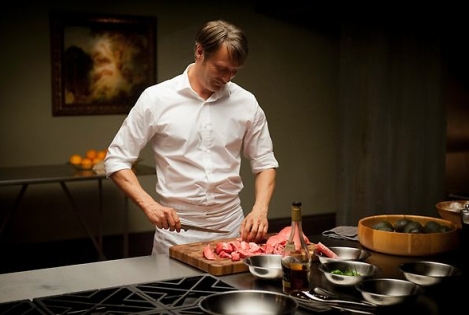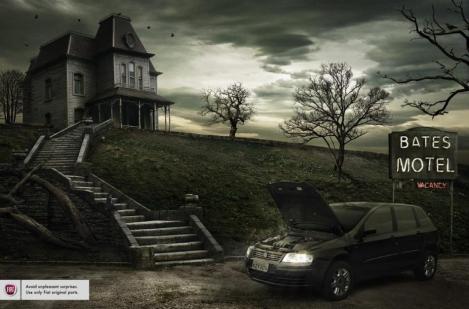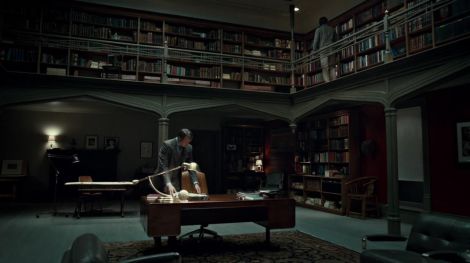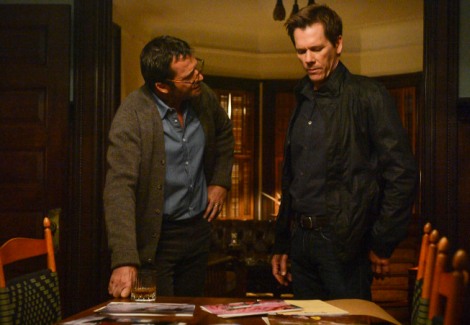So I took a class on the Gothic tradition and for my final project and my honors contract, I wrote two articles. One of them was connecting the gothic to some of our favorite television serial killers. Here it is, reformatted for Nerdophiles.
Death is a living-breathing beast. The Gothic tradition intensifies it, and makes it into a character of its own. Like Poe’s The Masque of the Red Death or Stoker’s Dracula, death walks among the living taking his victims. The inevitable being that everyone must face, has been a topic for many writers, and it has taken a special place in popular television, specifically in the subgenre of serial killer television; or rather, new subgenre for television. The monumental theme of death is found in The Following, Hannibal, and Bates Motel, this theme takes form in the characters, the murders, and the setting.

In a show that revolves around murder, the spotlight character is often the killer. For The Following it is Joe Carroll, the charismatic and psycho sociopathic Gothic literature professor turned cult leader. For Hannibal it is the eponymous Hannibal Lector, the charismatic and sociopathic psychiatrist turned cannibal serial killer. For Bates Motel it is Norman Bates, the sweet and psychopathic mama’s boy turned blackout killer.
Joe, Hannibal, and Norman all romance death, even without killing. Joe is a Gothic literature professor; he is obsessed with Edgar Allen Poe, imparting Poe’s voice as a method of luring followers into his group. Hannibal is a consultant to the FBI’s behavioral analysis unit; he also indulges in Will Graham’s macabre visions and stories. Norman escapes from a life of murder, only to be brought into a world where murder is essential for his survival. Norman’s own character comes into question when he kills, especially since he blacks out and mentally turns into an emotionless killer. They are the theoretical grim reaper taken form in a human. None fear the act taking a life, but are rather enlivened by it.
The murders committed by the antagonists separate them the functioning society. For these men, killing is a necessity. It is not only necessary for their survival, but also for their existence. Joe Carroll validates himself as a leader through his killing. It is through this act that he gains power. Norman Bates, on the other hand, is kills for survival. He kills Keith Summers in order to protect his mother from rape, he kills his father while he beats his mother, and he attempts to kill Shelby in fear of harming his family. What separates him from a victim and a cold-blooded killer is that Norman, on his own, is wholly unthreatening. But when someone threatens him, he mentally blacks out and a cold-blooded killer takes his place with no moral qualms about murder.

In Hannibal Lector’s case, he’s literally killing for sustenance. One might call him the most humane of all serial killers, since he wastes not in his murders. He kills, cooks, and eats his prey. He propels himself forward in the lives of the FBI agents, specifically Will Graham, while keeping himself one step ahead of the agency the entire time. This puts him in the middle of murder, committing the crimes and investigating them as well. For these serial killers, death surrounds them, and they are addicted to it like a drug.
The locational aesthetics of a television program are important in bringing to life both the mood and the tone of a work. All three shows possess similar visual imagery that helps to bring the audience into a gothic world. Ever since Walpole’s The Castle of Otranto, we have associated dark stormy gothic towers as images associated closest with gothic tradition. The image of a looming massive castle is brought into the contemporary in the aesthetic and settings of the shows.
In The Following, Joe Carroll and his cult reside in a colonial mansion on massive acres of land isolated from society. The presence of the manor is not only seen as a shrine to Carroll but also the macabre. The cult members who live there are in constant awareness of killing, and are surrounded by the Poe-inspired teachings of Carroll. The manor itself is an eerie representation of a forgotten era.

In Bates Motel, the motel that Norman’s mother Norma buys comes with a statuesque manor of its own. A beautiful Victorian home by the sea; as if it couldn’t get more Gothic. The home is not only a physical image of Victorian Gothicism, but also a literal hot spot of murder. The death of the vicious Keith Summers, Bradley’s father, and villainous Zach Shelby all occur around or at the Bates Motel. It is also a spot where Summers and Shelby kept their sex slaves while doing business in the town. The motel and the home are not only symbols for death but locations where murder can be masked and completed without complication for the main characters.
The aesthetic in Hannibal is much less overt than the ones found in the other two shows. But one of the key locations in the program is the location of Hannibal’s office. Vastly different from any doctor’s office I’ve ever seen, the plush room is decorated in dark tones and thick wood, with little trinkets and statues that hint at Hannibal’s own devious identity. The office is where Hannibal is able to relive the experience of killing, it is also what legitimizes him and is a physical representation of the status he holds with the FBI. For all of the antagonizing protagonists, their gothic locations are a safe haven and society blinders from peering eyes.

The Gothic is heavily laced in television shows about death, from crime shows to paranormal ones. The popular curiosity in death has been highlighted within the Gothic, and can be found in the resurgence and creation of the subgenre of “serial killer television” in popular media. The shows not only possess the characters that embody death, but also carry the mood and tones of foreboding terror and dread. It is impossible to separate the Gothic from this subgenre, to do so would undermine the entirety of the show.

